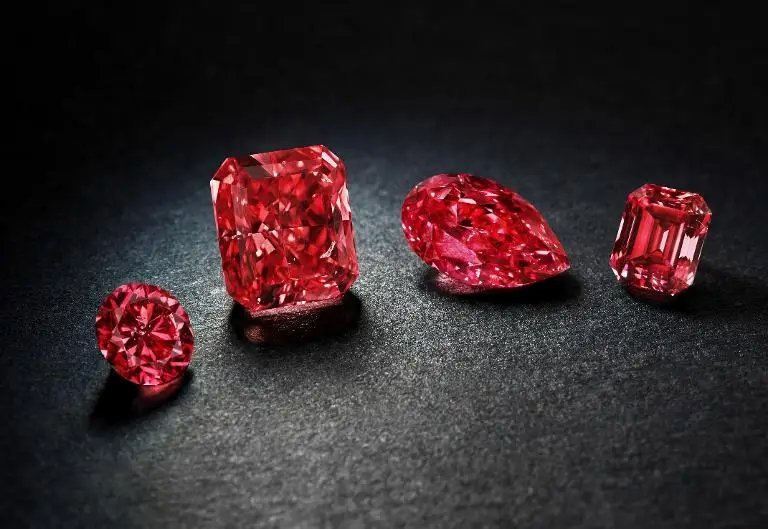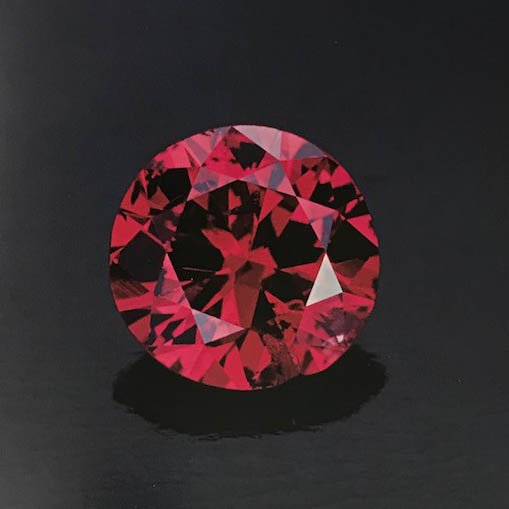History of the Hancock Red Diamond
Contents
Discovery of the Hancock Red Diamond
Diamond's Unique Characteristics
The Diamond's Journey
The Red Diamond's Rarity
How Red Diamonds are Formed
The Value of the Hancock Red Diamond
Red Diamonds in Pop Culture
Caring for Your Red Diamond
Conclusion
FAQ’s
Image Courtesy of FCD Invest
Introduction
The Hancock Red Diamond is an extraordinary gemstone that has captured the imagination of collectors and enthusiasts for decades. This article will delve into the intriguing history, unique characteristics, and the fascinating journey of this remarkable gemstone.
Discovery of the Hancock Red Diamond
The Jonker Diamond Connection
The Hancock Red Diamond's story begins with its discovery in the early 20th century. It was found alongside the famous Jonker Diamond, a 726-carat rough diamond that was later cut into 13 separate stones. The two diamonds were discovered within close proximity of each other, leading some experts to speculate that they may have originated from the same diamond crystal.
Image Courtesy of LiveAuctioneers
Diamond's Unique Characteristics
The Intensity of its Red Color
The Hancock Red Diamond is famous for its vibrant red hue, which is incredibly rare among natural diamonds. The intensity of its color is attributed to the presence of nitrogen within the diamond's crystal lattice.
The Diamond's Clarity
Another notable feature of the Hancock Red Diamond is its exceptional clarity. The gem is virtually free of any inclusions, making it a highly sought-after piece in the world of fine gemstones.
The Diamond's Journey
The Auction History
The Hancock Red Diamond has changed hands several times throughout its history, often making headlines at major auction houses. Its most famous sale took place in 1987, when it was sold for a record-breaking $880,000 per carat.
Image Courtesy of Jem Boxx
Famous Owners
The diamond's namesake, Warren Hancock, was a renowned collector of rare gemstones. He acquired the red diamond in the 1950s and held onto it for over two decades. After his death, the diamond continued to attract the attention of prominent collectors and celebrities.
The Red Diamond's Rarity Comparison to Other Red Diamonds
Red diamonds are among the rarest gemstones on earth, with only a handful known to exist. The Hancock Red Diamond is one of the finest examples, showcasing a deep and vivid red color that sets it apart from its peers.
The Argyle Diamond Mine Connection
The Argyle Diamond Mine in Western Australia has become synonymous with rare and valuable colored diamonds, including red diamonds. Although the Hancock Red Diamond was discovered long before the Argyle Mine opened, the mine's consistent production of red diamonds has only served to further emphasize the rarity and desirability of gems like the Hancock Red Diamond.
Image Courtesy of Mining Technology
How Red Diamonds are Formed
The Role of Nitrogen
The vibrant red color in diamonds, including the Hancock Red Diamond, is due to the presence of nitrogen atoms within the diamond's crystal lattice. When nitrogen atoms are incorporated into the lattice, they absorb specific wavelengths of light, resulting in the unique red hue.
The Role of Pressure and Heat
In addition to nitrogen, the formation of red diamonds requires extreme pressure and heat deep within the Earth's mantle. The combination of these intense conditions, along with the presence of nitrogen, leads to the creation of these extremely rare and valuable gemstones.
The Value of the Hancock Red Diamond
Factors Affecting Value
The Hancock Red Diamond's value is determined by a combination of factors, including its size, color intensity, clarity, and historical significance. Its exceptional rarity and unique beauty make it an immensely sought-after gemstone in the world of fine jewelry.
Caring for Your Red Diamond
Cleaning and Storage
To maintain the beauty and brilliance of your red diamond, it's important to clean it regularly using a gentle jewelry cleaner or a soft toothbrush and mild soap. Always store your diamond in a padded jewelry box or pouch to protect it from scratches and damage.
Insuring Your Diamond
Given the rarity and value of red diamonds, it's essential to insure your gemstone against theft, loss, or damage. Consult with an experienced insurance agent to ensure that your investment is adequately protected.
Conclusion
The Hancock Red Diamond is an extraordinary gemstone that embodies the rarest and most exquisite characteristics of natural diamonds. Its vibrant red hue, exceptional clarity, and storied history make it a true marvel within the world of fine gemstones. As red diamonds continue to captivate collectors, enthusiasts, and the public, the allure of the Hancock Red Diamond will undoubtedly endure for generations to come.
FAQs
1. How large is the Hancock Red Diamond?
The Hancock Red Diamond weighs approximately 0.95 carats, making it a relatively small but exceptionally valuable gemstone due to its intense color and exceptional clarity.
2. What is the origin of the Hancock Red Diamond's name?
The diamond is named after its most famous owner, Warren Hancock, a renowned collector of rare gemstones who acquired the diamond in the 1950s.
3. How does the Hancock Red Diamond compare to other red diamonds in terms of rarity and value?
The Hancock Red Diamond is considered one of the finest examples of red diamonds, with its deep and vivid red color setting it apart from other red diamonds. Its rarity, color intensity, and clarity make it an extremely valuable gemstone.
4. How often do red diamonds like the Hancock Red Diamond appear on the market?
Red diamonds are exceedingly rare, and gems like the Hancock Red Diamond are infrequently offered on the market. Their scarcity and the growing interest from collectors and investors make it challenging to predict when the next similar gemstone will become available.
5. Can the Hancock Red Diamond be used in jewelry?
Yes, the Hancock Red Diamond can be set in various types of jewelry, such as rings, pendants, and earrings. Its exquisite color and clarity make it an exceptional centerpiece for any piece of fine jewelry, adding a touch of sophistication and luxury. However, due to its value and rarity, it is essential to work with experienced jewelers who understand how to handle and set such a rare and valuable gemstone properly.




